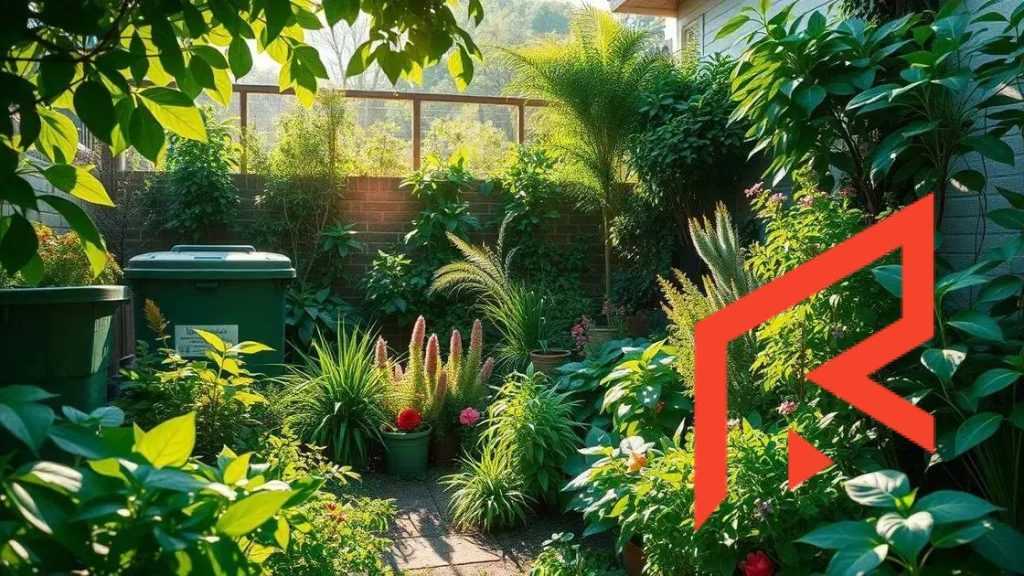Sustainable gardening involves practices such as selecting native plants, managing water efficiently, and composting to create a healthier ecosystem while promoting biodiversity and reducing environmental impact.
Embracing sustainable gardening can significantly impact your local ecosystem and food security. Have you considered how your choices can help the environment?
Understanding the principles of sustainable gardening
Understanding the principles of sustainable gardening is essential for promoting environmental health and enhancing your garden’s productivity. Sustainable gardening emphasizes the importance of ecological balance and aims to nurture both plants and wildlife.
Principles of Sustainable Gardening
The core principles include focusing on local ecosystems, conserving resources, and minimizing waste. By using native plants, you can create a harmonious environment that supports local wildlife, such as bees and butterflies, which are crucial for pollination.
Soil Health
Healthy soil is the foundation of sustainable gardening. Incorporating organic matter, such as compost, improves soil structure and fertility. Regularly testing your soil can help determine nutrient needs and prevent over-fertilization, which can harm the environment.
Water Conservation
Implementing wise water management practices is crucial. Techniques such as drip irrigation and mulching help retain moisture in the soil while reducing consumption. Collecting rainwater for irrigation is also an excellent sustainable practice.
Waste Reduction
Minimizing waste is another vital principle. Composting kitchen scraps and garden waste not only reduces landfill contributions but also enriches your garden. Recycling materials for garden beds or using eco-friendly alternatives can further enhance sustainability.
Encouraging Biodiversity
Lastly, encourage biodiversity by creating diverse plantings and habitats. A variety of plants attracts different wildlife, making your garden more resilient and vibrant. Planting flowers, shrubs, and vegetables together can help achieve this balance.
Essential tools for effective gardening
Having the right tools is crucial for effective gardening. Tools help make tasks easier and enhance the overall gardening experience. Below are some essential tools every gardener should consider.
Hand Tools
Hand tools include items like trowels, hand forks, and pruners. A quality trowel is perfect for digging small holes and transplanting seedlings. A hand fork is great for aerating soil and removing weeds. Pruners are essential for trimming and shaping plants.
Hoe and Rake
A hoe is invaluable for breaking up soil and cultivating rows for planting. Using a rake helps level soil and clear debris from your garden area. These tools help prepare the soil for planting and keeping it organized.
Watering Can and Hose
Proper watering is essential for plant health. A watering can is perfect for smaller gardens and delicate plants. For larger gardens, a hose with an adjustable nozzle allows for better control over water distribution.
Gloves
Protecting your hands while gardening is important. Invest in a pair of durable gardening gloves to avoid blisters and protect against thorny plants. Gloves also keep your hands clean while working with soil and plants.
Garden Cart and Storage
A garden cart makes moving tools, plants, and soil easier. It reduces strain on your body and keeps everything organized. It’s also helpful to have a storage shed or area for your tools, ensuring they’re readily accessible and well-maintained.
Plant selection for biodiversity
Selecting the right plants is vital for promoting biodiversity in your garden. By choosing a variety of plants, you can create a healthy ecosystem that supports different species and improves soil quality.
Importance of Native Plants
Native plants are adapted to your local environment, making them an excellent choice for biodiversity. They require less water and maintenance and provide essential habitats for local wildlife. Incorporating native species can lead to healthier gardens.
Diverse Plant Types
Including different types of plants—such as trees, shrubs, perennials, and annuals—encourages a wide range of pollinators and birds. This variety creates a balanced environment, where different species can thrive together.
Seasonal Interest
Choose plants that bloom at different times throughout the season. This ensures that there are always resources available for pollinators and other wildlife. Consider including early bloomers and late-season flowers to extend the blooming period.
Companion Planting
Companion planting can enhance biodiversity and optimize plant health. Some plants can naturally repel pests while others attract beneficial insects. For example, planting marigolds with vegetables can deter harmful pests.
Creating Microhabitats
Design your garden to include microhabitats such as rock piles, water features, or sheltered areas. These elements provide safe spaces for various wildlife, allowing them to thrive in your garden.
Water management in sustainable practices
Water management is crucial in sustainable gardening. Effective management not only conserves water but also supports healthy plants and reduces environmental impact.
Understanding Water Needs
Each plant species has specific water requirements. It’s important to understand the water needs of your plants to prevent over or under-watering. Group plants with similar needs together to simplify irrigation.
Rainwater Harvesting
Consider installing a rainwater harvesting system to collect rainwater from your roof. This can reduce your reliance on municipal water and provide a natural, softened water source for your garden. It’s an eco-friendly way to irrigate plants.
Efficient Irrigation Methods
Using efficient irrigation methods like drip irrigation can significantly conserve water. Drip systems deliver water directly to the root zone, minimizing evaporation and runoff. This targeted approach ensures that plants receive adequate moisture without waste.
Soil Moisture Management
Healthy soil retains moisture better than compacted or depleted soil. Amending your soil with organic matter, such as compost, improves its structure and moisture-retaining capabilities. Regularly check soil moisture levels to provide the appropriate amount of water.
Mulching for Water Conservation
Applying a layer of mulch around plants helps retain soil moisture by reducing evaporation. Mulch also suppresses weeds, which compete for water. Organic mulches like wood chips or straw provide additional benefits as they break down and enrich the soil.
Creating a composting system at home
Creating a composting system at home is an excellent way to recycle organic waste and enrich your garden soil. Composting reduces waste sent to landfills and supports sustainable gardening practices.
Choosing a Compost Bin
Selecting the right compost bin is essential. You can purchase bins or make one from materials like wood or wire. Ensure the bin allows airflow while keeping pests out. A size that fits your space and needs is also important.
What to Compost
Include kitchen scraps like fruit and vegetable peels, coffee grounds, and eggshells. Yard waste like grass clippings, leaves, and small branches can also be composted. Avoid meat, dairy, and oils, as they can attract pests.
Layering Materials
When adding materials, alternate between green materials (nitrogen-rich) like fruit scraps and brown materials (carbon-rich) like dried leaves. This balance helps maintain healthy compost. Aim for a mix of about three parts brown materials to one part green materials.
Maintaining Your Compost
To keep your compost healthy, regularly turn it. This aerates the pile and speeds up decomposition. Keep it moist, but not too wet. If your compost smells, it may need more brown materials or better aeration.
Using Your Compost
After a few months, your compost will be ready when it is dark and crumbly. Use it to enrich garden beds, potting mixes, or as a top dressing for your plants. It provides valuable nutrients and improves soil structure.
Embracing Sustainable Gardening Practices
Sustainable gardening is not just a trend; it is a necessary approach to promote a healthier environment. By understanding the principles of sustainable gardening, selecting the right plants, managing water wisely, and creating compost at home, anyone can contribute to a greener planet.
Implementing these practices makes your garden flourish and supports local wildlife and ecosystems. Remember that every small effort counts. Start with one change, and you will see the positive impact over time.
With dedication and knowledge, you can create a beautiful and sustainable garden that benefits both you and the environment.
FAQ – Frequently Asked Questions about Sustainable Gardening Practices
What is sustainable gardening?
Sustainable gardening is an approach that focuses on working with nature to create a healthy garden, using methods that conserve resources and promote biodiversity.
How can I manage water effectively in my garden?
You can manage water effectively by using drip irrigation, collecting rainwater, and incorporating mulch to reduce evaporation from the soil.
What materials can I compost at home?
You can compost kitchen scraps like vegetable peels, fruit waste, and yard waste such as leaves and grass clippings while avoiding meat, dairy, and oils.
Why is it important to plant native species?
Native species are adapted to local conditions, requiring less water and maintenance. They also support local wildlife, enhancing biodiversity in your garden.
How often should I turn my compost?
You should turn your compost every few weeks to aerate it and speed up the decomposition process, keeping it healthy and reducing odors.
What benefits does composting provide to my garden?
Composting enriches the soil, provides essential nutrients for plants, improves soil structure, and helps retain moisture.


 AI tools that enhance productivity and streamline workflows
AI tools that enhance productivity and streamline workflows  Mobile apps to avoid for your privacy and data security
Mobile apps to avoid for your privacy and data security  AI image generation: How it transforms creative expressions today
AI image generation: How it transforms creative expressions today